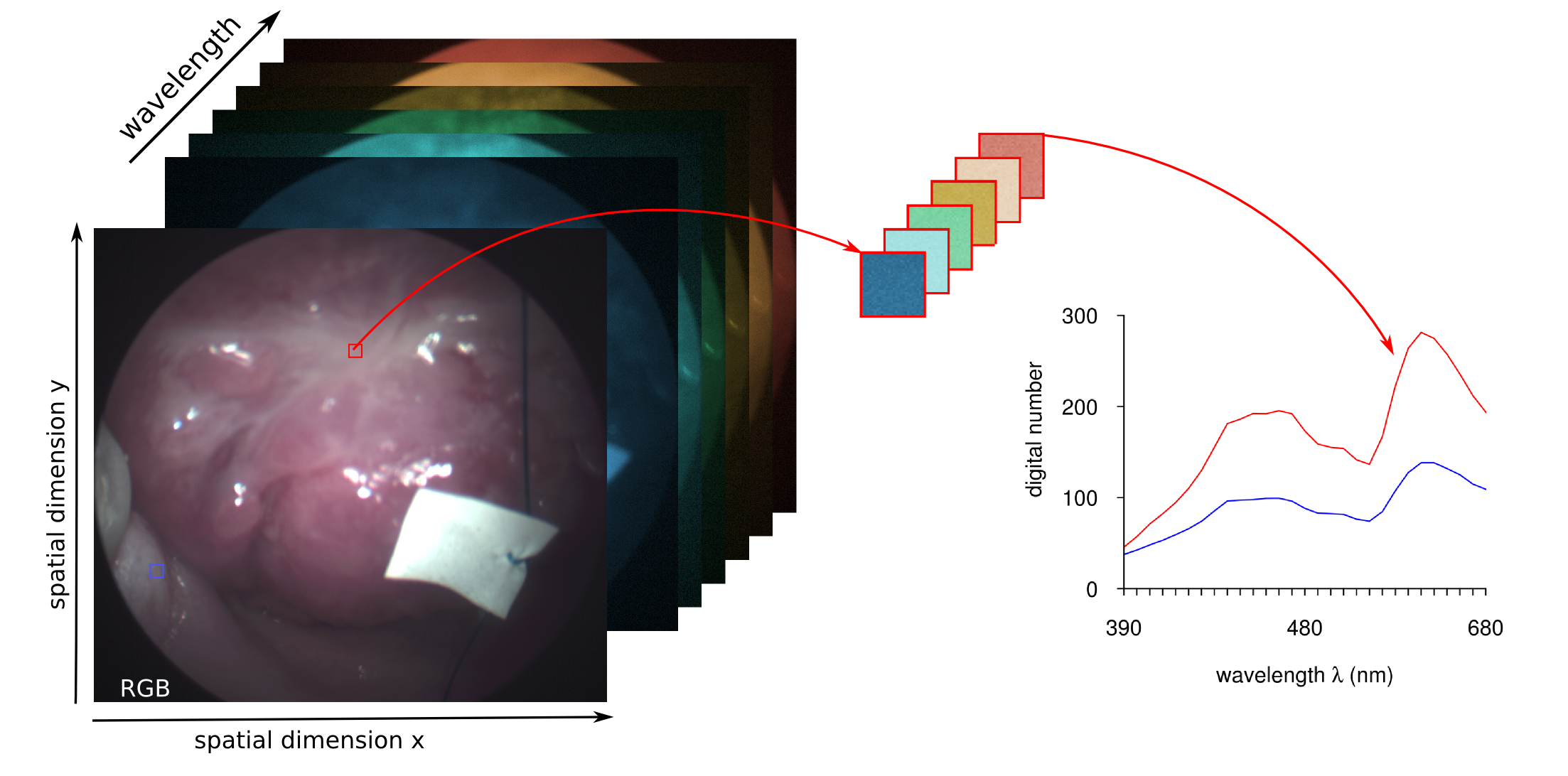Early Detection of Laryngeal Cancer by Hyperspectral Imaging [funded by DKH] - Status: closed
Project staff:
Prof. Dr. Jörg Bendix
Dr. Boris Thies
Description:

According to the Nationaler Krebsplan, early detection of cancer is one of the major tasks in order to improve survival of cancer. Although major risk factors for head and neck cancer are known, targeted screening is not available so far due to the lack of adequate tools. Patients at risk are inspected clinically and evaluated subjectively using white light, autofluorescence, and narrow band imaging. Due to the subjective nature of this assessment lesions are misclassified thus leading to both, an over- and undertreatment. The consortium will tackle this point by applying a novel imaging approach: Hyperspectral Imaging with subsequent Principal Component Analysis and Hyperspectral Classification has proven its capacity for biopsy-free and unsupervised classification in satellite-based geographical-information systems (GIS) for decades. In this scale it allows to obtain data on soil constituents, vegetation, and agriculture, among others. Recently, this approach has been translated to the classification of pigmented skin lesions. In this project, taking the larynx as a well defined anatomical structure this approach will be transferred to the mucosa of the upper aero-digestive tract. Due to its well confined anatomical dimensions at the one hand and due to the wide variety of different pathologies present at the other hand, the larynx is the ideal organ for evaluating in-vivo hyperspectral microendoscopy. It will be the first time to apply such an endoscopy technology in medicine. So far the applicant has already successfully obtained the proof of principle by a pilot study (see figure on cover and figure 1, page 9): using a special light source and a conventional operation microscope a hyperspectral image cube of the laryngeal mucosa is generated. This image cube is analysed by existing GIS-software. Taking the histology of the lesion as gold standard, a supervised classification is performed and the data are stored in a hyperspectral library. This allows to extract spectral signatures characteristic for different pathologies. Additionally, a smear is obtained from the laryngeal mucosa which is analysed by slide-based cytometry for the DNA-content of the tumour cells. The applicant has established this technology for early detection of solid tumours of the head and neck cancer as an objective tool using DNA-aneuploidy as discriminator. Having generated a sufficiently large library with abundant data on different etiologies, Hyperspectal Imaging will be validated by non-supervised classification of further lesions and the value of an additional cytometry will be determined.
Publications and poster presentations:
2016 - Regeling, B.; Thies, B.; Gerstner, A.O.; Westermann, S.; Müller, N.A.; Bendix, J. & Laffers, W. (2016): Hyperspectral Imaging Using Flexible Endoscopy for. Sensors 16, 1-14.
- Laffers, W.; Westermann, S.; Regeling, B.; Martin, R.; Thies, B.; Gerstner, A.O.; Bootz, F. & Müller, N.A. (2016): Early recognition of cancerous lesions in the mouth and oropharynx : Automated evaluation of hyperspectral image stacks. HNO 64(1), 27-33.
2015 - Regeling, B.; Laffers, W.; Gerstner, A.O.; Westermann, S.; Müller, N.A.; Schmidt, K.; Bendix, J. & Thies, B. (2015): Development of an image pre-processor for operational hyperspectral laryngeal cancer detection. J. Biophotonics 9(3), 235-245.
2013 - Gerstner, A.O.; Martin, R.; Westermann, S.; Mahnlein, A.; Schmidt, K.; Thies, B. & Laffers, W. (2013): Hyperspectral Imaging in der Kopf-Hals-Onkologie. Laryngo-Rhino-Otologie 92(7), 453-457.
2012 - Gerstner, A.O.; Laffers, W.; Schade, G.; Goke, F.; Martin, R. & Thies, B. (2012): Endoscopy of the larynx by hyperspectral imaging. HNO 60, 1047-1052.
- Martin, R.; Thies, B. & Gerstner, A.O. (2012): Hyperspectral hybrid method classification for detecting altered mucosa of the human larynx. International Journal of Health Geographics 11, 21.




